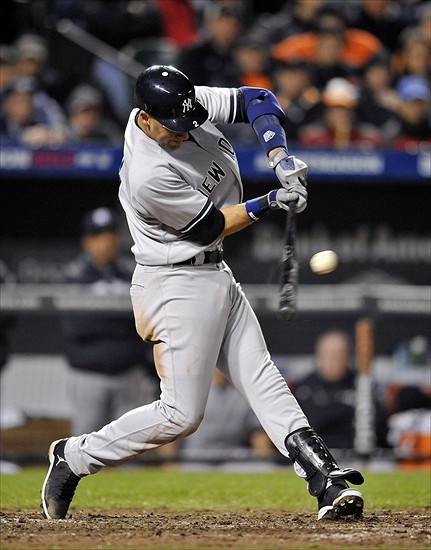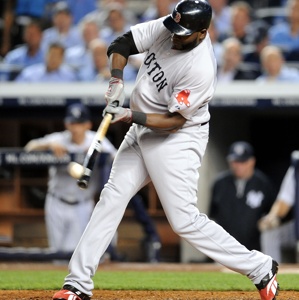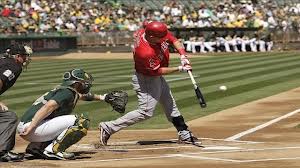 This article appeared in the August 2014 edition of Coach and AD Magazine
This article appeared in the August 2014 edition of Coach and AD Magazine
Picture this… It’s a hot summer day, and you just finished mowing the lawn and washing the car. With sweat still dripping down your forehead, you head into the man cave, and sit down on your favorite recliner to the relaxing feeling of “AAAHHHHHH” from the moment you hit the cushion. Remote in one hand, the TV turns on and your team is playing an exciting afternoon ball game. All that’s missing right now from this becoming THE perfect day is that ice cold, frosty adult beverage in your other hand. But at this point, you are way too comfortable, having become one with the couch to even think about getting up.
Enter Little Jimmy, who saddles up next to you for some quality father/son bonding time, cheering every time Jeter comes through with a clutch hit, while lamenting with every A-Rod whiff that leaves the bases loaded. An idea pops into your head.
“Hey Jimmy… Want to do your dad a big favor and get him a beer from the fridge?”
Crickets. Not even a flinch to indicate that he heard you. And if he did, that seven year old of yours has learned the fine art of selective hearing that took you decades to perfect. So you ask again, this time making sure to grab his attention.
“Hey buddy… Daddy is really thirsty. Can you please grab me a drink from the kitchen?”
And in the whiniest of replies, Jimmy moans, “nooooooooo!”
What to do now about this drink? You know that the second it hits your lips it will be so refreshing, but you still can’t bare the thought of leaving your sanctuary to get it yourself. And then, a light bulb goes on in your head.
“Hey Jimmy! I bet that you can’t bring me a Miller Light in ten seconds.”
Like a lightning bolt, you watch your son race into the kitchen and a mere seven seconds later, there’s a bottle in hand. Congratulations! You’ve now discovered a way to crush that six pack without moving an inch. The simple challenge of time just completely motivated your kid to enthusiastically do something that he originally wanted no part of. Well, the same rule can be applied to your practices, often times garnering a similar result.
Any successful coach will tell you how much they love the competitiveness that comes with playing games, and the desire to do whatever it takes to beat their opponent. That same coach, however, will likely tell you how much they live for practice, because it’s during practice where a coach can truly leave a mark on his team, seen both collectively in wins and losses, as well as individually in their players’ athletic development.
One of the greatest challenges in coaching is to get our players to embrace practice as much as we do, and while there is no cookie-cutter way of doing so, if you find creative ways to make your workouts competitive, things will start moving in the right direction. Additionally, by consistently putting together practice plans that force the guys on your team to go up against one another and against themselves, when it come times to go to battle against a true opponent WITH one another, their inner fight will likely take to another level, as they have been practicing the competition even though they haven’t actually been playing.
————————————————
The minor league baseball season is 140 games, played in a matter of about 150 days. Add a month or so of spring training, and then another few weeks for fall mini-camp, players are spending well over 200 days on the field, honing their craft, trying to get better every day in an effort to get to the Major Leagues. It is every bit of a grind physically, and maybe even more so mentally as players work through the many ups and downs of the year. Keeping guys as engaged on that sweltering July day as they were the first day of spring training in February is not an easy task, but it is an achievable one.
Here in Greenville, South Carolina, with a group of 19-24 year olds, for many of which this is their first full professional season as members of the Greenville Drive, class-A affiliate of the Boston Red Sox, one of our primary points of emphasis is teaching these guys how to get into a routine, and how to work properly where they ideally are getting something out of every rep they take. A daily routine will help create the consistency in their day to day business that will allow them to develop their skills. It is within their daily routine where our staff is challenged to find those ways to keep guys enthusiastic towards the work necessary to get better. We do that both by varying the drills we do, in addition to adding some kind of game within those drills that forces competitiveness as well as focus.
The different aspects of baseball give us some pretty good flexibility to allow our creativity to take over in all of our pre-game work, which is done as many as five hours prior to first pitch. Below are a few examples of how we try to get the most out of our guys both competitively and developmentally:
TEN MEANS TEN
Infielders take ground balls every single day. They are as much a part of the daily routine as taking BP is for hitters, or playing catch is for pitchers. As we get into the grind of the season, a few months in, perhaps weeks without a day off, the day to day work can get monotonous and it’s up to us to keep that work productive. This concept we use with infielders has a number of different variations. One can entail just ten ground balls for the player, with the stipulation that each is taken with 100% focus and technique. Another pins two infielders up against one another at the same time to see who can field the most out of ten cleanly. By keeping reps at a minimum, you can ensure a player’s best concentration to do each rep right, since they are not being asked to lock in for a prolonged period of time.
TARGET PRACTICE

Over the course of our season, hitters can take upwards of 20,000 swings. And that is not including all of the work most do in the off-season at home. With that much of a workload, in order to keep guys strong for the year, we need to find a balance between making sure they are getting enough reps to improve without completely wearing them down. To do that, we set up various drills that force a level of concentration that breeds development, with a side of competition. We take two protective screens and stand them up in the middle of the field, one on each side of second base about 50 feet from one another. The goal is simple- for the player to hit the ball in between the screens. We don’t talk a word of mechanics, yet when this is accomplished, by putting the emphasis on a specific result those mechanics of the swing have to fall into place. This is a drill that is done in small groups, with each player striving to beat the next. By the end of the drill, the result is often three or four players that just made their swing better through competitive work.
THE GAME IS ON THE LINE… EVEN IN THE BULLPEN

Baseball is such a unique team sport for the fact that a single individual has a disproportionately large impact on a win or loss. That individual is the pitcher. That pitcher controls everything. With that kind of a burden on one person’s shoulders, there is a natural pressure that comes with that kind of responsibility. In between outings, pitchers work in the bullpen, throwing to a catcher with no hitter in the batter’s box. That in itself, is not a very game-like situation. But when specific game situations are presented to the pitcher in this environment, all of a sudden, they are now practicing under pressure to execute a certain pitch in a certain location. Now a few days later, when the game does come along, and that specific situation just practiced in the bullpen appears in the game, it will be easier to work through, because it’s been worked on.
————————————————
For whatever reason, practice has often brought a negative connotation with it amongst athletes. While most in sports love to play, the best love to practice as well. Allow your players to stay in the comfort of their daily routines, but enable them to grow each and every day by making those routines even more productive with the added element of competition.
No matter the sport, and no matter the level, the competitiveness of an athlete will always come in to play. We’ve long believed that if a guy is not willing to compete, then his natural ability does not mean a thing. Some players innately have that gene to battle, and for the others who don’t, it’s our job as coaches to ingrain it in them, and we can do that every single day in practice.











